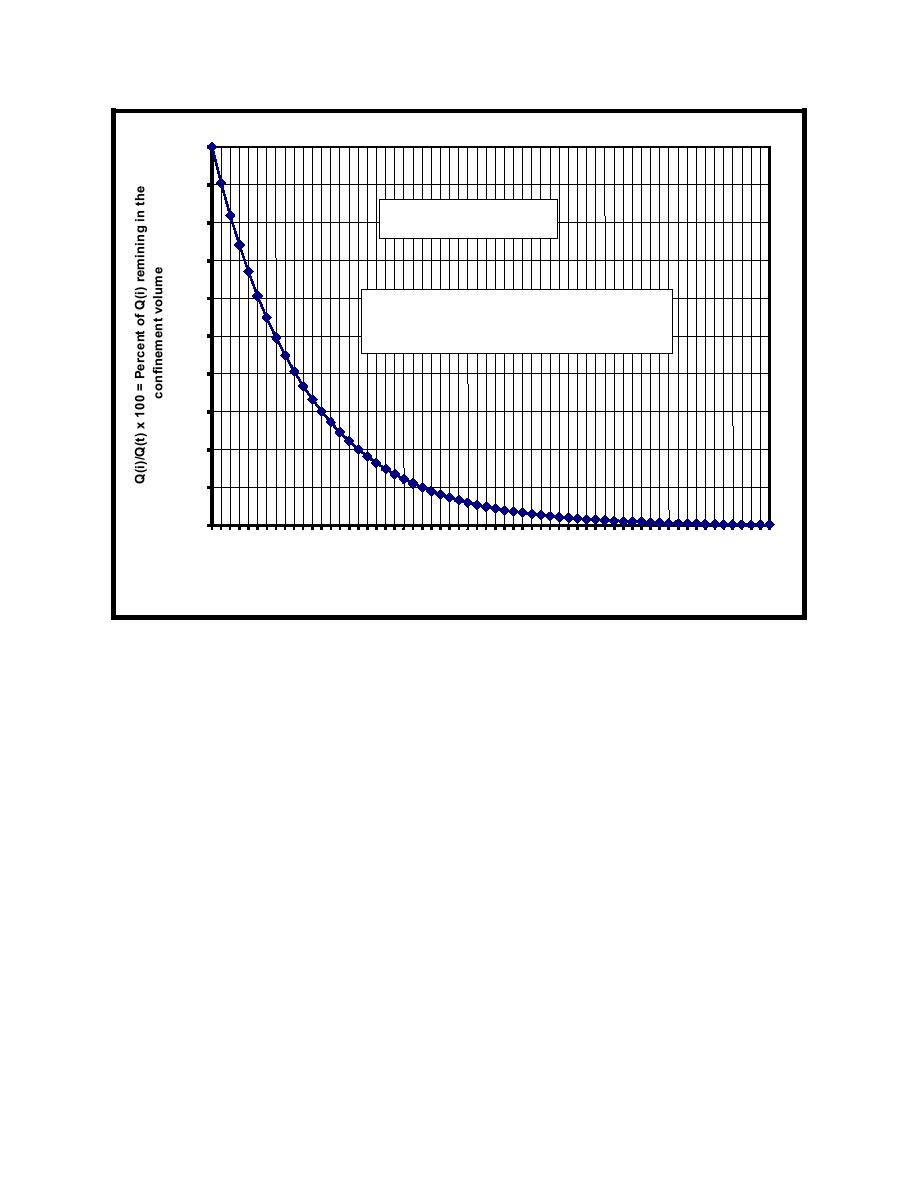 |
|||
|
|
|||
|
Page Title:
Figure 4-6. Confinement volume cleanup rate as a function of system time constant, F/V, assuming an exponential dilution rate |
|
||
| ||||||||||
|
|  DOE-HDBK-1129-99
100
90
Q(t)=Q(i) e-t/(F/V)
80
70
60
Note that the quantity of tritium remaining in the
confinement volume decreases by a factor of 10
for each 2.3 time constants, i.e. when t=2.3 x F/V
50
40
30
20
10
0
0.00 0.30 0.60 0.90 1.20 1.50 1.80 2.10 2.40 2.70 3.00 3.30 3.60 3.90 4.20 4.50 4.80 5.10 5.40 5.70 6.00
t/(V/F) = Number of System Time Constants (F/V)
FIGURE 4-6. Confinement volume cleanup rate as a function of system time constant,
F/V, assuming an exponential dilution rate
The fourth consideration is the system leak rate. While the tritium removal system is in operation,
some of the gases will leak out of the system to the environment. The barrier must be leak tight
enough to prevent a significant release of tritium to the environment while the tritium is being
removed. A high flow rate tritium removal system can be used to help offset a leaky system, but
will significantly increase the cost of the removal system.
The quantity of tritium released to the environment due to the leak rate can be calculated.
Assuming exponential dilution, the concentration of tritium in the gas C T2(t) is
CT2(t) = CT2(i)e -t/(F/V)
where CT2(i) =
initial concentration of tritium in the system
t =
time
V =
volume of the system
F =
flow rate of the tritium removal system
Note, CT2(i) = QT2/V where QT2 is the quantity of tritium released.
36
|
|
Privacy Statement - Press Release - Copyright Information. - Contact Us |